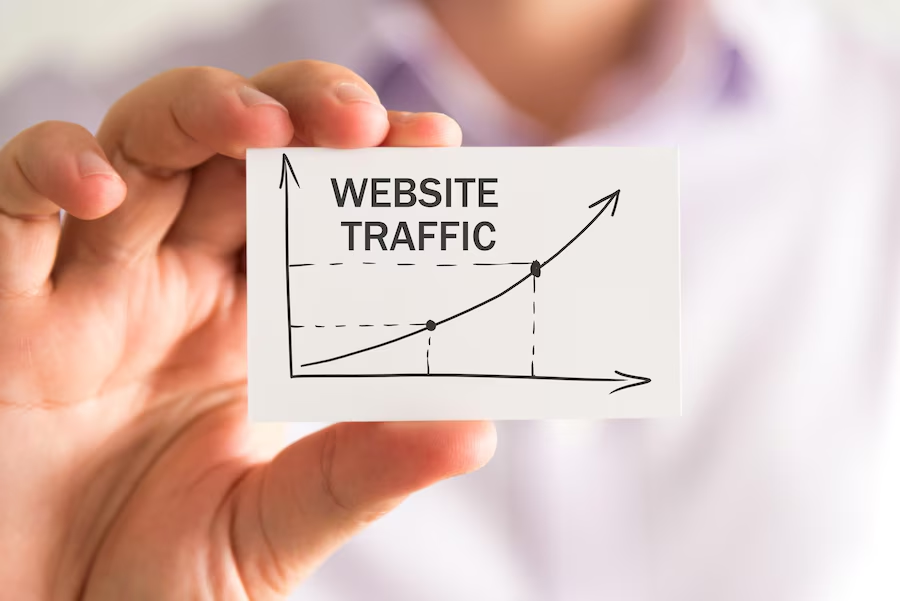The Growing Importance of SEO in 2025
Search Engine Optimization (SEO) refers to the practice of optimizing websites and content to improve visibility and ranking on search engine results pages (SERPs). SEO is a cornerstone of digital marketing, helping businesses connect with audiences by aligning with user search intent.
In 2025, SEO evolves by adapting to technological advancements, user behavior changes, and search engine algorithm updates. This dynamic landscape makes SEO more critical than ever, as businesses strive to remain competitive in increasingly crowded digital spaces. The growing competition underscores the need for businesses to implement strong SEO strategies to maintain visibility and relevance.
Increased Online Dependency
The post-2020 era has witnessed a significant surge in online activities, including shopping, learning, and remote work. This trend has only accelerated, with 2025 marking an unprecedented rise in global internet users, further solidifying the internet’s role as a primary platform for business and communication.
In this increasingly saturated digital marketplace, businesses that neglect SEO risk losing visibility and relevance. With consumers relying heavily on search engines to discover products, services, and information, a strong SEO strategy is no longer optional but essential for maintaining a competitive edge.
Search Engines: Gatekeepers of Online Visibility
Imagine searching for a product or service online—chances are, you’ll click on one of the top results on the first page. This is the reality of how consumers interact with search engines like Google and Bing, which act as gatekeepers, connecting users to businesses. For brands, being visible on these platforms isn’t just beneficial; it’s vital.
In 2025, the competition to secure top rankings is fiercer than ever, with the majority of users never venturing beyond the first page of search results. SEO serves as the ultimate tool to help businesses climb these rankings, ensuring they remain visible to their audience. By investing in SEO, companies not only increase their chances of being found but also position themselves as credible and trustworthy in the eyes of potential customers.
Enhanced User Experience: The Heart of Modern SEO
In today’s fast-paced digital world, users demand more than just relevant content—they expect seamless interactions. Modern SEO prioritizes elements like lightning-fast site speed, mobile optimization, and intuitive navigation to create an exceptional user experience (UX). These improvements not only help websites rank higher on search engines but also keep visitors engaged, satisfied, and coming back for more.
In 2025, Google continues to lead the charge with its emphasis on Core Web Vitals and user-focused algorithm updates. These metrics reward websites that deliver a smooth, enjoyable experience, making UX an integral part of successful SEO strategies. Businesses that embrace these practices not only boost their rankings but also foster trust and loyalty among their customers, turning casual visitors into lifelong advocates.
Voice and Visual Search Optimization
The year 2025 has ushered in a significant rise in voice and image-based searches, revolutionizing the way users interact with search engines. With the growing prevalence of smart devices and visual search technologies, consumers increasingly rely on spoken queries and image recognition to find information quickly and efficiently.
To remain competitive, businesses must adapt their SEO strategies to accommodate these emerging trends. This includes optimizing for conversational keywords, structuring content for voice queries, and ensuring images are properly tagged and searchable. Organizations that embrace these innovations gain a distinct competitive edge, positioning themselves to capture the attention of modern, tech-savvy audiences.
Local SEO and Hyper-Personalization
As consumers increasingly seek products and services in their immediate vicinity, the importance of “near me” searches continues to grow in 2025. Local SEO has become a cornerstone for businesses aiming to attract nearby customers and dominate their regional markets.
Key strategies, such as optimizing Google My Business profiles, ensuring accurate local listings, and encouraging customer reviews, play a critical role in improving visibility for local searches. Additionally, hyper-personalization in search results—tailoring content and recommendations based on user preferences and behavior—has a profound impact on customer trust and loyalty. By embracing local SEO and personalized strategies, businesses can forge stronger connections with their audience and drive more meaningful engagement.
The ROI of SEO: A Long-Term Investment
SEO stands out as one of the most cost-effective digital marketing strategies when compared to paid advertisements. While paid ads can deliver quick results, they often come with high costs and a limited lifespan. In contrast, SEO focuses on building sustainable organic traffic, providing long-term benefits that continue to generate value long after initial efforts.
For example, businesses that invest in targeted keyword optimization, high-quality content, and technical SEO often see consistent growth in website traffic and customer acquisition without the ongoing expense of ad budgets. Real-world success stories abound of companies scaling their operations and significantly increasing their market share through effective SEO strategies. By prioritizing SEO, businesses can achieve a higher return on investment while establishing a strong foundation for future growth.
Competitive Edge in 2025
In the highly competitive digital landscape of 2025, SEO is no longer optional—it is a non-negotiable strategy for businesses aiming to stand out and thrive. With countless brands vying for attention, those that neglect SEO risk losing significant market share and becoming virtually invisible to their target audience.
SEO not only enhances a brand’s organic search presence but also works seamlessly alongside other digital marketing efforts like social media campaigns and pay-per-click (PPC) advertising. By integrating these strategies, businesses can create a cohesive online presence that maximizes reach and engagement. A well-executed SEO plan ensures businesses remain ahead of the competition and maintain their relevance in an ever-evolving market.
Conclusion: Secure Your Growth with SEO in 2025
In an era where the digital landscape is more competitive than ever, SEO remains indispensable for driving business growth. From enhancing visibility and user experience to adapting to emerging search trends, SEO is the foundation for success in 2025 and beyond. Businesses that prioritize SEO not only gain a competitive edge but also position themselves for long-term success in an ever-changing market.
Now is the time to take action. Don’t let your business fall behind—partner with experts who can craft and execute a winning SEO strategy. At ML Digital Marketing, we specialize in helping businesses like yours unlock their full potential through tailored SEO solutions. Let us guide you to the top of the search results and keep you ahead of the competition. Contact us today to start your journey to digital success!
FAQs
1. Why is SEO important for businesses in 2025?
SEO boosts visibility, drives organic traffic, enhances user experience, and keeps businesses competitive in a crowded digital landscape.
2. How does SEO impact online visibility?
SEO helps your business rank higher on search engine results, making it more visible to potential customers and increasing traffic.
3. What are the key elements of modern SEO?
Modern SEO includes site speed, mobile optimization, user experience, voice and visual search, and local SEO strategies.
4. How can SEO help businesses compete?
SEO ensures businesses are visible to the right audience, leading to long-term growth, improved customer engagement, and a competitive edge.
5. What is the ROI of SEO compared to paid ads?
SEO offers sustainable, long-term ROI by generating organic traffic without ongoing ad costs, unlike paid ads that deliver short-term results.








